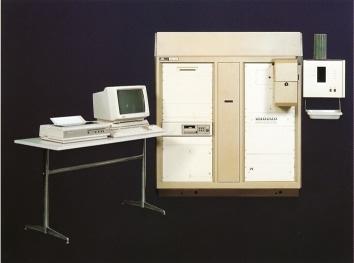|
Instrument Database:
Applied Research Laboratories (ARL) - Model 3580 - Simultaneous/Sequential ICP-OES
( Thermo Scientific )
| |
|

|
| |
|
| |
|
| Year of introduction |
1985 |
| Status |
historical ( out of service ) |
| Company |
Applied Research Laboratories (ARL)
|
| Categories |
Spectrometer ( Atom. ): AES: ICP-AES
|
|
The 3580 OES system provides the dual capability of simultaneous and sequential analysis in a single, integrated package, Combining the high-throughput, parallelchannel power of the 3560 with the versatility of the 3520's sequential spectrometer technology, the 3580 will accommodate any of four excitation stands and offers the benefits of both the 3520 and 3560 in one comprehensive system. The ARL 3580 OES -the ultimate optical emission instrument.
|
| Specifications |
|
| Specifications | | Dimensions (w x d x h in cm)
| 141 x 90 x 167.5
| Weight (kg)
| 1300 | Power
|
| Spectrometer
| Polychromator/Monochromator: 1-m Paschen-Runge mount, vacuum and air version; thermostatization allows 18-30°C ambient temperature.
| | Grating | concave grating, 1080 lines/mm (both in Polychromator and Monochromator)
| Optics
| entrance slit width: 20 µm; exit slit width: 50 µm; 7
filters for order separation and stray light reduction
| | Wavelength range | 165-800 nm
| Wavelength drive
| Monochromator: fixed optical mounting; exit slits are equally spaced (every 2 mm) on steel masks in focal plane; 2 moveable photomultipliers (10 stage-l U.V. and 1 for visible range) and moveable entrance slit allow random wavelength access. Polychromator: computer controlled stepper-motor driven primary slit allow random wavelength access for peak scanning and off-peak background correction | | Resolution | Reciprocal linear dispersion is 0.93 nm/mm in 1st order, 0.46 nm/ mm in 2nd order, 0.31 nm/mm in 3rd order, and 0.23 nm in 4th order.
Resolution with 20 µm primary and 50 µm secondary slits is 46 pm in 1st order, 23 pm in 2nd order, 16 pm in 3rd order, and 12 pm in 4th order (all FWHM). | | Detector | Polychromator: up to 59 channels, each optical channel consists of a secondory slit, 45 deg. mirror, filter (optional), and photomultiplier tube | Detection mode
| | | Read out | | | | | ICP generator
| compact design integrated into spectrometer housing; solid-state driver; crystal controlled; closed loop autotuning; | | Frequency (MHz) | 27.12
| Power (Watt)
| 750
| Load coil
| four turns, water cooled (recirculating cooling system) | Torch
| Minitorch with reduced argon consumption (since 1989), fixed one-piece quartz
| Argon flow (L/min)
| < 9 l/min |
| | | Sample introduction | concentric Meinhard nebulizer; conical spray chamber (45 ml volume for reduced memory effect) | Operating system and software
| PlasmaVision
| Computer
| DEC MicroPDP -11 or IBM Personal Syslem/2 Model 30 with 640 Kbyte memory and VGA graphics (since 1989); 20Mbyte fixed disk drive with a 3-1/2 inch diskette; printer is an IBM Proprinter 11, IBM color monitor | Short term precision (RSD for 10 replicates)
| | Long term precision (RSD for 4 hours)
| | Sensitivity
|
| | Detection limits (3s, µg/L) |
| Accessories
| Three nebulizer options are offered to greatly improve performance: an efficient, reliable Ultrasonic Nebulizer (USN); a Corrosion Resistant Maximum Dissolved Solids Nebulizer (CRMDSN) designed for high total dissolved and/or suspended solids as weil as for sampies with high concentrations of mineral acids; Hydrofluoric acid; and a Conductive Solid Nebulizer (CSN), which eliminates the need to dissolve metallurgical sampies; | Special features
| Different Excitation sources: Spark, DC-Arc, GDS |
|
|
|